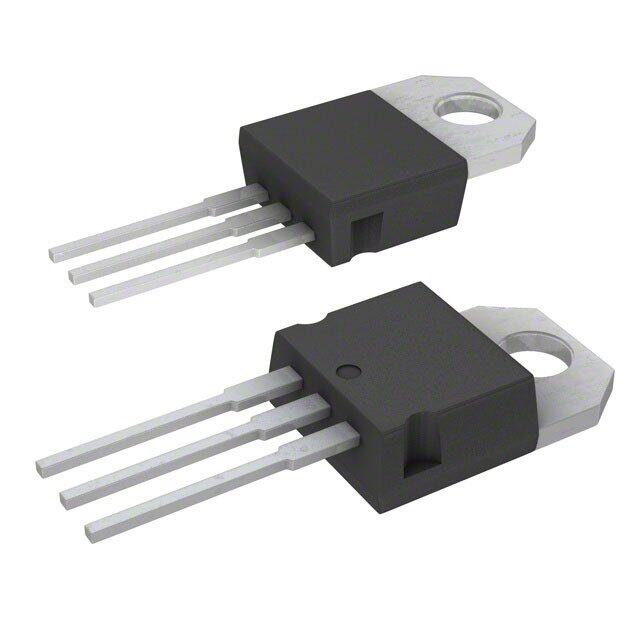ICGOO在线商城 > 集成电路(IC) > PMIC - 稳压器 - 线性 > TC1017-3.3VCTTR
- 型号: TC1017-3.3VCTTR
- 制造商: Microchip
- 库位|库存: xxxx|xxxx
- 要求:
| 数量阶梯 | 香港交货 | 国内含税 |
| +xxxx | $xxxx | ¥xxxx |
查看当月历史价格
查看今年历史价格
TC1017-3.3VCTTR产品简介:
ICGOO电子元器件商城为您提供TC1017-3.3VCTTR由Microchip设计生产,在icgoo商城现货销售,并且可以通过原厂、代理商等渠道进行代购。 TC1017-3.3VCTTR价格参考。MicrochipTC1017-3.3VCTTR封装/规格:PMIC - 稳压器 - 线性, Linear Voltage Regulator IC Positive Fixed 1 Output 3.3V 150mA SOT-23-5。您可以下载TC1017-3.3VCTTR参考资料、Datasheet数据手册功能说明书,资料中有TC1017-3.3VCTTR 详细功能的应用电路图电压和使用方法及教程。
| 参数 | 数值 |
| 产品目录 | 集成电路 (IC)半导体 |
| 描述 | IC REG LDO 3.3V 0.15A SOT23-5低压差稳压器 150mA CMOS LDO |
| 产品分类 | |
| 品牌 | Microchip Technology |
| 产品手册 | |
| 产品图片 |
|
| rohs | 符合RoHS无铅 / 符合限制有害物质指令(RoHS)规范要求 |
| 产品系列 | 电源管理 IC,低压差稳压器,Microchip Technology TC1017-3.3VCTTR- |
| 数据手册 | 点击此处下载产品Datasheethttp://www.microchip.com/mymicrochip/filehandler.aspx?ddocname=en011757http://www.microchip.com/mymicrochip/filehandler.aspx?ddocname=en023833 |
| 产品型号 | TC1017-3.3VCTTR |
| 产品种类 | 低压差稳压器 |
| 供应商器件封装 | SOT-23-5 |
| 包装 | 带卷 (TR) |
| 商标 | Microchip Technology |
| 回动电压—最大值 | 200 mV at 50 mA |
| 安装类型 | 表面贴装 |
| 安装风格 | SMD/SMT |
| 封装 | Reel |
| 封装/外壳 | SC-74A,SOT-753 |
| 封装/箱体 | SOT-23 A |
| 工作温度 | -40°C ~ 125°C |
| 工厂包装数量 | 3000 |
| 最大工作温度 | + 125 C |
| 最大输入电压 | 6 V |
| 最小工作温度 | - 40 C |
| 最小输入电压 | + 2.7 V |
| 标准包装 | 3,000 |
| 电压-跌落(典型值) | 0.285V @ 150mA |
| 电压-输入 | 最高 6V |
| 电压-输出 | 3.3V |
| 电压调节准确度 | 0.5 % |
| 电流-输出 | 150mA |
| 电流-限制(最小值) | - |
| 稳压器拓扑 | 正,固定式 |
| 稳压器数 | 1 |
| 线路调整率 | 0.04 % / V |
| 负载调节 | 0.38 % |
| 输入偏压电流—最大 | 0.053 mA |
| 输出电压 | 3.3 V |
| 输出电流 | 150 mA |
| 输出端数量 | 1 Output |
| 输出类型 | Fixed |

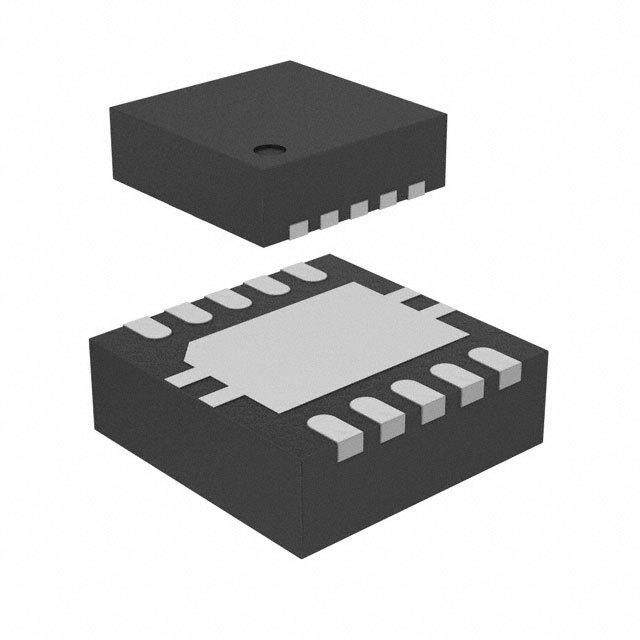
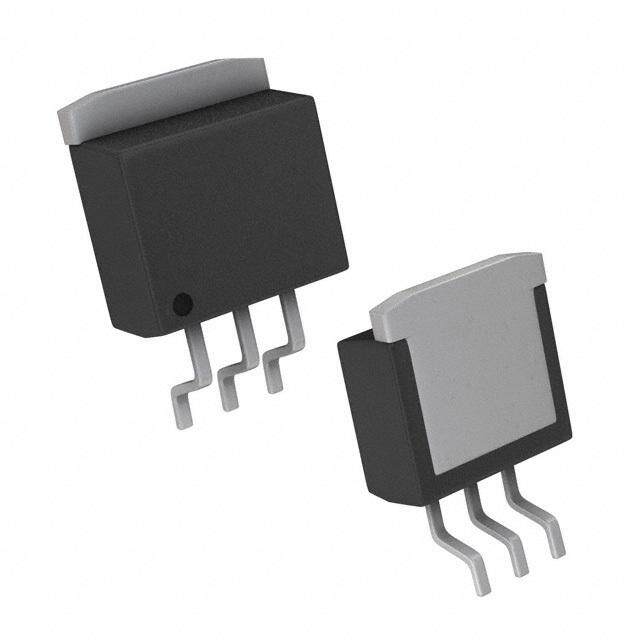
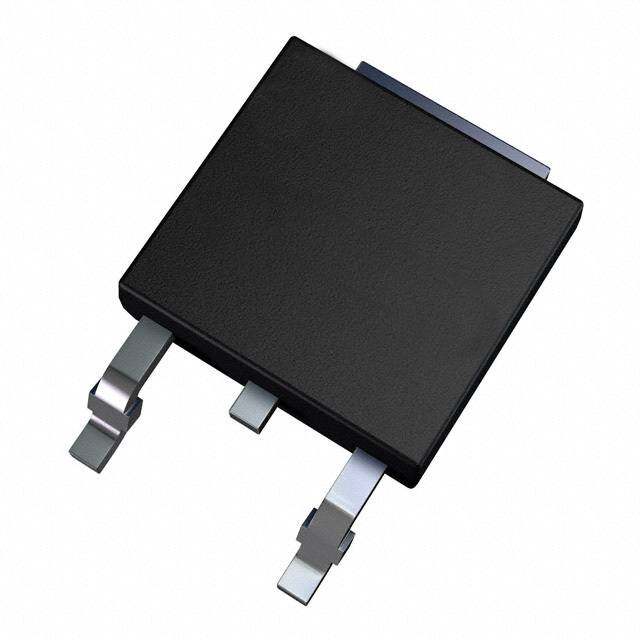




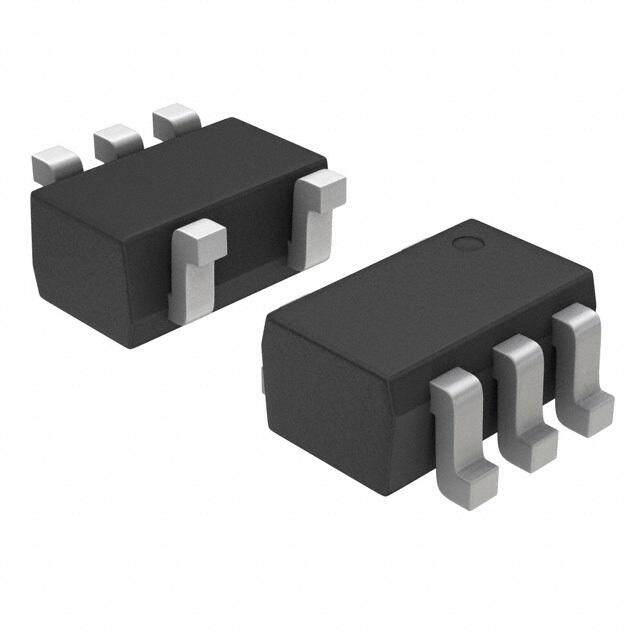

- 商务部:美国ITC正式对集成电路等产品启动337调查
- 曝三星4nm工艺存在良率问题 高通将骁龙8 Gen1或转产台积电
- 太阳诱电将投资9.5亿元在常州建新厂生产MLCC 预计2023年完工
- 英特尔发布欧洲新工厂建设计划 深化IDM 2.0 战略
- 台积电先进制程称霸业界 有大客户加持明年业绩稳了
- 达到5530亿美元!SIA预计今年全球半导体销售额将创下新高
- 英特尔拟将自动驾驶子公司Mobileye上市 估值或超500亿美元
- 三星加码芯片和SET,合并消费电子和移动部门,撤换高东真等 CEO
- 三星电子宣布重大人事变动 还合并消费电子和移动部门
- 海关总署:前11个月进口集成电路产品价值2.52万亿元 增长14.8%
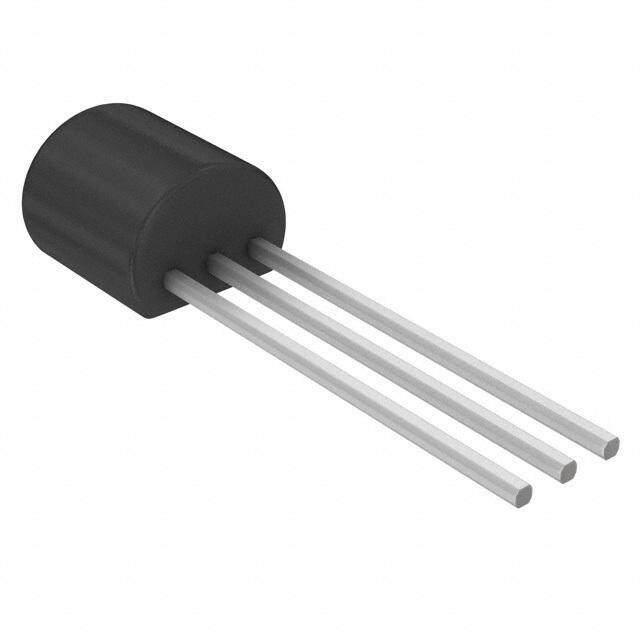

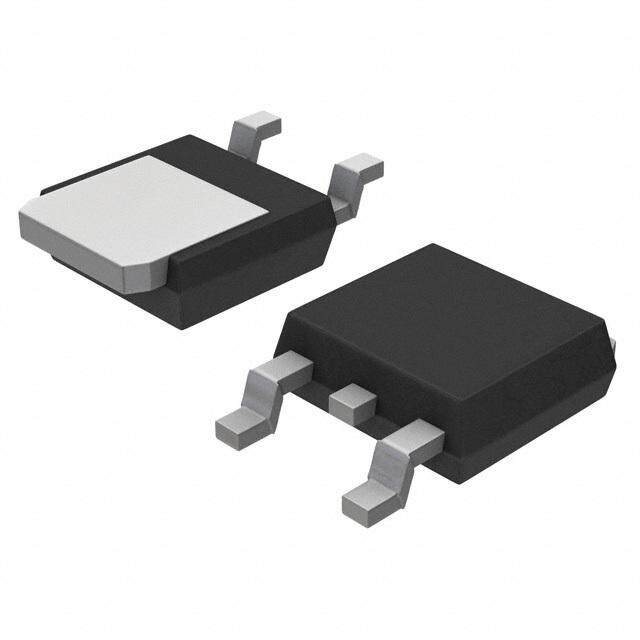
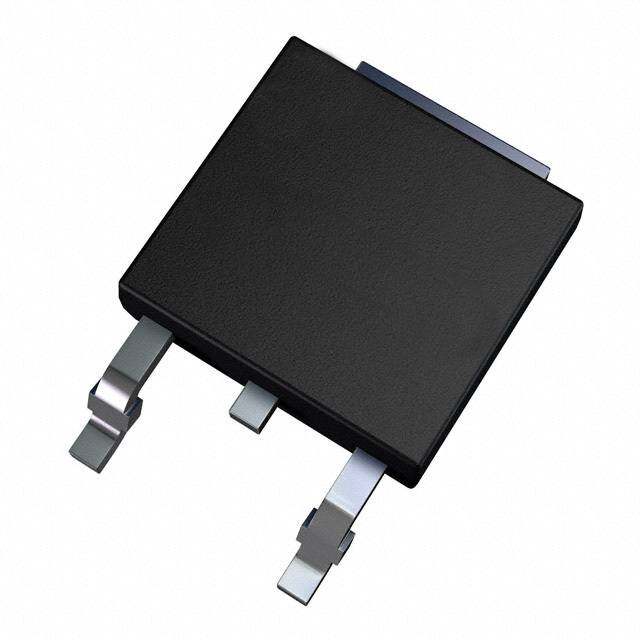


PDF Datasheet 数据手册内容提取
TC1017 150 mA, Tiny CMOS LDO With Shutdown Features: General Description: • Space-saving 5-Pin SC-70 and SOT-23 Packages The TC1017 is a high-accuracy (typically ±0.5%) CMOS upgrade for bipolar Low Dropout regulators • Extremely Low Operating Current for Longer (LDOs). It is offered in a SC-70 or SOT-23 package. Battery Life: 53µA (typ.) The SC-70 package represents a 50% footprint reduc- • Very Low Dropout Voltage tion versus the popular SOT-23 package and is offered • Rated 150mA Output Current in two pinouts to make board layout easier. • Requires Only 1µF Ceramic Output Capacitance Developed specifically for battery-powered systems, • High Output Voltage Accuracy: 0.5% (typical) the TC1017’s CMOS construction consumes only • 10µs (typ.) Wake-Up Time from SHDN 53µA typical supply current over the entire 150mA • Power-Saving Shutdown Mode: 0.05µA (typ.) operating load range. This can be as much as 60 times • Overcurrent and Overtemperature Protection less than the quiescent operating current consumed by bipolar LDOs. • Pin-Compatible Upgrade for Bipolar Regulators The TC1017 is designed to be stable, over the entire Applications: input voltage and output current range, with low-value (1µF) ceramic or tantalum capacitors. This helps to • Cellular/GSM/PHS Phones reduce board space and save cost. Additional inte- • Battery-Operated Systems grated features, such as shutdown, overcurrent and • Portable Computers overtemperature protection, further reduce the board space and cost of the entire voltage-regulating • Medical Instruments application. • Electronic Games Key performance parameters for the TC1017 include • Pagers low dropout voltage (285mV typical at 150mA output current), low supply current while shutdown (0.05µA typical) and fast stable response to sudden input voltage and load changes. Package Types SC-70 SOT-23 V V V NC V NC IN OUT OUT OUT 5 4 5 4 5 4 TC1017 TC1017R TC1017 1 2 3 1 2 3 1 2 3 SHDN NC GND V GND SHDN V GND SHDN IN IN 2005-2013 Microchip Technology Inc. DS21813F-page 1
TC1017 1.0 ELECTRICAL PIN FUNCTION TABLE CHARACTERISTICS Name Function Absolute Maximum Ratings † SHDN Shutdown control input. NC No connect Input Voltage....................................................................6.5V GND Ground terminal Power Dissipation.........................Internally Limited (Note 7) V Regulated voltage output Maximum Voltage On Any Pin..................V + 0.3V to -0.3V OUT IN V Unregulated supply input † Notice: Stresses above those listed under “Maximum IN Ratings” may cause permanent damage to the device. This is a stress rating only and functional operation of the device at those or any other conditions above those indicated in the operation listings of this specification is not implied. Exposure to maximum rating conditions for extended periods may affect device reliability. ELECTRICAL CHARACTERISTICS Electrical Specifications: Unless otherwise noted, V = V + 1V, I = 100µA, C = 1.0µF, SHDN > V , T = +25°C IN R L L IH A Boldface type specifications apply for junction temperatures of –40°C to +125°C. Parameter Sym. Min. Typ. Max. Units Test Conditions Input Operating Voltage V 2.7 — 6.0 V Note1 IN Maximum Output Current I 100 — — mA Note1 OUTMAX 150 — — V >= 3V and IN V >= (V + 2.5%) + IN R V DROPOUTMAX Output Voltage V V – 2.5% V ±0.5% V + 2.5% V Note2 OUT R R R V Temperature Coefficient TCV — 40 — ppm/°C Note3 OUT OUT Line Regulation V /V )| / V — 0.04 0.2 %/V (V + 1V) < V < 6V OUT IN R R IN Load Regulation (Note4) V |/ V — 0.38 1.5 % I = 0.1mA to I OUT R L OUTMAX Dropout Voltage (Note5) V – V — 2 — mV I = 100µA IN OUT L — 90 200 I = 50mA L — 180 350 I = 100mA L — 285 500 I = 150mA L Supply Current I — 53 90 µA SHDN = V , I = 0 IN IH L Shutdown Supply Current I — 0.05 2 µA SHDN = 0V INSD Power Supply Rejection Ratio PSRR — 58 — dB f =1kHz, I = 50mA L Note 1: The minimum V has to meet two conditions: V 2.7V and V (V + 2.5%) + V . IN IN IN R DROPOUT 2: V is the regulator voltage setting. For example: V = 1.8V, 2.7V, 2.8V, 3.0V. R R 3: 6 V –V 10 OUTMAX OUTMIN TCV = -------------------------------------------------------------------------------------- OUT V T OUT 4: Regulation is measured at a constant junction temperature using low duty-cycle pulse testing. Load regulation is tested over a load range from 0.1mA to the maximum specified output current. Changes in output voltage due to heating effects are covered by the thermal regulation specification. 5: Dropout voltage is defined as the input-to-output differential at which the output voltage drops 2% below its nominal value at a 1V differential. 6: Thermal regulation is defined as the change in output voltage at a time T after a change in power dissipation is applied, excluding load or line regulation effects. Specifications are for a current pulse equal to I at V = 6V for t = 10msec. LMAX IN 7: The maximum allowable power dissipation is a function of ambient temperature, the maximum allowable junction temperature and the thermal resistance from junction-to-air (i.e., T, T, ). Exceeding the maximum allowable power A J JA dissipation causes the device to initiate thermal shutdown. Please see Section5.1 “Thermal Shutdown”, for more details. 8: Output current is limited to 120mA (typ) when V is less than 0.5V due to a load fault or short-circuit condition. OUT DS21813F-page 2 2005-2013 Microchip Technology Inc.
TC1017 ELECTRICAL CHARACTERISTICS (CONTINUED) Electrical Specifications: Unless otherwise noted, V = V + 1V, I = 100µA, C = 1.0µF, SHDN > V , T = +25°C IN R L L IH A Boldface type specifications apply for junction temperatures of –40°C to +125°C. Parameter Sym. Min. Typ. Max. Units Test Conditions Wake-Up Time t — 10 — µs V = 5V, I = 60mA, WK IN L (from Shutdown mode) C = C =1µF, IN OUT f = 100Hz Settling Time t — 32 — µs V = 5V, I = 60mA, S IN L (from Shutdown mode) C = 1µF, IN C = 1µF, f = 100Hz OUT Output Short-Circuit Current I — 120 — mA V = 0V, Average OUTSC OUT Current (Note8) Thermal Regulation V /P — 0.04 — V/W Notes6,7 OUT D Thermal Shutdown Die T — 160 — °C SD Temperature Thermal Shutdown Hysteresis T — 10 — °C SD Output Noise eN — 800 — nV/Hz f = 10kHz SHDN Input High Threshold V 45 — — %V V = 2.7V to 6.0V IH IN IN SHDN Input Low Threshold V — — 15 %V V = 2.7V to 6.0V IL IN IN Note 1: The minimum V has to meet two conditions: V 2.7V and V (V + 2.5%) + V . IN IN IN R DROPOUT 2: V is the regulator voltage setting. For example: V = 1.8V, 2.7V, 2.8V, 3.0V. R R 3: 6 V –V 10 OUTMAX OUTMIN TCV = -------------------------------------------------------------------------------------- OUT V T OUT 4: Regulation is measured at a constant junction temperature using low duty-cycle pulse testing. Load regulation is tested over a load range from 0.1mA to the maximum specified output current. Changes in output voltage due to heating effects are covered by the thermal regulation specification. 5: Dropout voltage is defined as the input-to-output differential at which the output voltage drops 2% below its nominal value at a 1V differential. 6: Thermal regulation is defined as the change in output voltage at a time T after a change in power dissipation is applied, excluding load or line regulation effects. Specifications are for a current pulse equal to I at V = 6V for t = 10msec. LMAX IN 7: The maximum allowable power dissipation is a function of ambient temperature, the maximum allowable junction temperature and the thermal resistance from junction-to-air (i.e., T, T, ). Exceeding the maximum allowable power A J JA dissipation causes the device to initiate thermal shutdown. Please see Section5.1 “Thermal Shutdown”, for more details. 8: Output current is limited to 120mA (typ) when V is less than 0.5V due to a load fault or short-circuit condition. OUT TEMPERATURE CHARACTERISTICS Electrical Specifications: Unless otherwise indicated, V = +2.7V to +6.0V and V = GND. DD SS Parameters Sym. Min. Typ. Max. Units Conditions Temperature Ranges Specified Temperature Range TA -40 — +125 °C Extended Temperature parts Operating Temperature Range T -40 — +125 °C A Storage Temperature Range T -65 — +150 °C A Thermal Package Resistances3 Thermal Resistance, 5L-SOT23 — 255 — °C/W JA Thermal Resistance, 5L-SC-70 — 450 — °C/W JA 2005-2013 Microchip Technology Inc. DS21813F-page 3
TC1017 2.0 TYPICAL PERFORMANCE CHARACTERISTICS Note: The graphs and tables provided following this note are a statistical summary based on a limited number of samples and are provided for informational purposes only. The performance characteristics listed herein are not tested or guaranteed. In some graphs or tables, the data presented may be outside the specified operating range (e.g., outside specified power supply range) and therefore outside the warranted range. Note: Unless otherwise noted, V = V + 1V, I = 100µA, C = 1.0µF, SHDN > V , T = +25°C. IN R L L IH A 0.40 0.40 0.35 VOUT = 2.85V 0.35 VOUT = 2.85V e (V) 0.30 TA = +125°C e (V) 0.30 IOUT = 150 mA ag 0.25 TA = +25°C ag 0.25 Volt 0.20 TA = -40°C Volt 0.20 ut 0.15 ut 0.15 IOUT = 100 mA o o p p o 0.10 o 0.10 Dr 0.05 Dr 0.05 IOUT = 50 mA 0.00 0.00 0 25 50 75 100 125 150 -40 -15 10 35 60 85 110 Load Current (mA) Temperature (°C) FIGURE 2-1: Dropout Voltage vs. Output FIGURE 2-4: Dropout Voltage vs. Current. Temperature. -0.30 160 Regulation (%) -----00000.....5544350505 VIN = 6.0V IOUTV =O U0T- 1=5 20. 8m5AV cuit Current (mA) 1110246800000 VOUT = 2.85V Load --00..6650 VVINI N= = 3 .38.35VV hort Cir 2400 S -0.70 0 -40 -15 10 35 60 85 110 1 2 3 4 5 6 Temperature (°C) Input Voltage (V) FIGURE 2-2: Load Regulation vs. FIGURE 2-5: Short-Circuit Current vs. Temperature. Input Voltage. 57 57 VOUT = 2.85V VOUT = 2.85V 56 56 A) A) VIN = 6.0V urrent (µ 5545 TA = +125°C urrent (µ 5545 VIN = 3.85V y C 53 TA = +25°C y C 53 ppl 52 ppl 52 Su 51 TA = -40°C Su 51 VIN = 3.3V 50 50 3.3 3.6 3.9 4.2 4.5 4.8 5.1 5.4 5.7 6.0 -40 -15 10 35 60 85 110 Input Voltage (V) Temperature (°C) FIGURE 2-3: Supply Current vs. Input FIGURE 2-6: Supply Current vs. Voltage. Temperature. DS21813F-page 4 2005-2013 Microchip Technology Inc.
TC1017 Note: Unless otherwise noted, V = V + 1V, I = 100µA, C = 1.0µF, SHDN > V , T = +25°C. IN R L L IH A 0.40 0.40 0.35 VOUT = 3.30V 0.35 VOUT = 3.30V ut Voltage (V) 0000....12235050 TA = T-A4 0=° TC+A2 5=° +C125°C ut Voltage (V) 0000....12235050 IIOOUUTT == 115000 mmAA o o op 0.10 op 0.10 Dr 0.05 Dr 0.05 IOUT = 50 mA 0.00 0.00 0 25 50 75 100 125 150 -40 -15 10 35 60 85 110 Load Current (mA) Temperature (°C) FIGURE 2-7: Dropout Voltage vs. Output FIGURE 2-10: Dropout Voltage vs. Current. Temperature. -0.30 60 -0.35 VOUT = 3.30V 59 VOUT = 3.30V ulation (%) ---000...544050 VIN = 6.0V IOUT = 0-150 mA urrent (µA) 555678 TA = +25°C g C Re -0.55 y 55 Load -0.60 VVIINN == 44..03VV Suppl 54 TA = +125°C -0.65 53 TA = -40°C -0.70 52 -40 -15 10 35 60 85 110 4.0 4.5 5.0 5.5 6.0 Temperature (°C) Input Voltage (V) FIGURE 2-8: Load Regulation vs. FIGURE 2-11: Supply Current vs. Input Temperature. Voltage. 60 2.869 59 VOUT = 3.30V 2.868 VOUT = 2.85V nt (µA) 5578 VIN = 6.0V ge (V) 2.867 TA = -40°C y Curre 5556 VIN = 4.3V ut Volta 22..886656 TA = +25°C Suppl 5534 VIN = 4.0V Outp 22..886634 TA = +125°C 52 2.862 -40 -15 10 35 60 85 110 3.3 3.6 3.9 4.2 4.5 4.8 5.1 5.4 5.7 6.0 Temperature (°C) Input Voltage (V) FIGURE 2-9: Supply Current vs. FIGURE 2-12: Output Voltage vs. Supply Temperature. Voltage. 2005-2013 Microchip Technology Inc. DS21813F-page 5
TC1017 Note: Unless otherwise noted, V = V + 1V, I = 100µA, C = 1.0µF, SHDN > V , T = +25°C. IN R L L IH A 2.870 2.869 2.868 VOUT = 2.85V 2.868 VOUT = 2.85V V) 2.866 V) VIN = 6.0V oltage ( 22..886624 VIN = 6.0V oltage ( 22..886667 VIN = 3.3V utput V 22..885680 VIN = 3.85V utput V 22..886645 VIN= 3.85V O O 2.856 2.863 2.854 2.862 0 25 50 75 100 125 150 -40 -15 10 35 60 85 110 Load Current (mA) Temperature (°C) FIGURE 2-13: Output Voltage vs. Output FIGURE 2-16: Output Voltage vs. Current. Temperature. 2.0 100 urrent (µA) 1111....2468 VOUT = 2.85V TA = +125°C V/Hz)(cid:151) 10 VIOCOVUUOCTINTU=IN==T 4 ==320 ..11 88m 55µµAVVFF C 1.0 µ 1 utdown 000...468 Noise ( 0.1 Sh 0.2 TA = +25°C 0.0 0.01 3.3 3.6 3.9 4.2 4.5 4.8 5.1 5.4 5.7 6.0 10 100 1000 10000 100000 1000000 Input Voltage (V) Frequency (Hz) FIGURE 2-14: Shutdown Current vs. Input FIGURE 2-17: Output Noise vs. Frequency. Voltage. 0 0 -10 VVIINNDACC==130.805mVVp-p CIOOUUTT==110μ0FμXA7RCeramic -10 VVIINNDACC==130.805mVVp-p ICOOUUTT==11mμAFX7RCeramic -20 VOUTDC=2.85V -20 VOUTDC=2.85V dB) -30 dB) -30 ( ( RR -40 RR -40 S S P -50 P -50 -60 -60 -70 -70 0.01 0.1 1 10 100 1000 0.01 0.1 1 10 100 1000 Frequency(KHz) Frequency(KHz) FIGURE 2-15: Power Supply Rejection FIGURE 2-18: Power Supply Rejection Ratio vs. Frequency. Ratio vs. Frequency. DS21813F-page 6 2005-2013 Microchip Technology Inc.
TC1017 Note: Unless otherwise noted, V = V + 1V, I = 100µA, C = 1.0µF, SHDN > V , T = +25°C. IN R L L IH A 0 VIN = 3.85V -10 VVIINNDACC==130.805mVVp-p CIOOUUTT==510μmFAX7RCeramic COUT = 1 µCFIN C =e 1ra0m µicF -20 VOUTDC=2.85V B) -30 VOUT = 2.85V d R( -40 R S -50 P -60 I = 0.1 mA to 120 mA OUT -70 -80 0.01 0.1 1 10 100 1000 Frequency(KHz) FIGURE 2-19: Power Supply Rejection FIGURE 2-22: Load Transient Response. Ratio vs. Frequency. VOUT = 2.85V VIN = 3.85V C = 10 µF IN C = 4.7 µF Ceramic OUT V = 3.85V CIINN = 10 µF VOUT = 2.85V C = 1 µF Ceramic OUT I = 0.1 mA to 120 mA Shutdown Input OUT FIGURE 2-20: Wake-Up Response. FIGURE 2-23: Load Transient Response. VOUT = 2.85V C = 1.0 µFC ICN e=r a0m µicF OUT I = 120 mA LOAD VIN = 3.85V VOUT = 2.85V C = 10 µF IN C = 4.7 µF Ceramic OUT V = 3.85V to 4.85V IN Shutdown Input FIGURE 2-21: Wake-Up Response. FIGURE 2-24: Line Transient Response. 2005-2013 Microchip Technology Inc. DS21813F-page 7
TC1017 Note: Unless otherwise noted, V = V + 1V, I = 100µA, C = 1.0µF, SHDN > V , T = +25°C. IN R L L IH A COUT = 4IL.O7A Dµ FC= I CN1 e2=r0 a0 mm µiAcF VIN = 4.3V to 5.3V COUT =IL 1OA µDFC = ICN 1 e=0r 0a0 m µµAicF V = 2.85V OUT V = 3.85V to 4.85V IN V = 3.33V OUT FIGURE 2-25: Line Transient Response. FIGURE 2-26: Line Transient Response. C = 0 µF IN C = 10 µF Ceramic OUT VIN = 4.3V to 5.3V ILOAD = 100 µA V = 3.33V OUT FIGURE 2-27: Line Transient Response. DS21813F-page 8 2005-2013 Microchip Technology Inc.
TC1017 3.0 PIN DESCRIPTIONS The descriptions of the pins are listed in Table3-1. TABLE 3-1: PIN FUNCTION TABLE Pin No. Pin No. 5-Pin SOT-23 Symbol Description 5-Pin SC-70 5-Pin SC-70R 1 3 SHDN Shutdown Control Input 2 4 NC No Connect 3 2 GND Ground Terminal 4 5 VOUT Regulated Voltage Output 5 1 V Unregulated Supply Input IN 3.1 Shutdown Control Input (SHDN) 3.3 Regulated Voltage Output (V ) OUT The regulator is fully enabled when a logic-high is Bypass the regulated voltage output to GND with a applied to SHDN. The regulator enters shutdown when minimum capacitance of 1µF. A ceramic bypass a logic-low is applied to this input. During shutdown, the capacitor is recommended for best performance. output voltage falls to zero and the supply current is reduced to 0.05µA (typ.) 3.4 Unregulated Supply Input (V ) IN 3.2 Ground Terminal The minimum VIN has to meet two conditions in order to ensure that the output maintains regulation: For best performance, it is recommended that the V 2.7V and V [(V + 2.5%) + V ]. The IN IN R DROPOUT ground pin be tied to a ground plane. maximum V should be less than or equal to 6V. IN Power dissipation may limit V to a lower potential in IN order to maintain a junction temperature below 125°C. Refer to Section5.0 “Thermal Considerations”, for determining junction temperature. It is recommended that V be bypassed to GND with a IN ceramic capacitor. 2005-2013 Microchip Technology Inc. DS21813F-page 9
TC1017 4.0 DETAILED DESCRIPTION perature is approximately 150°C and the P-channel is turned on. If the internal power dissipation is still high The TC1017 is a precision, fixed-output, linear voltage enough for the junction to rise to 160°C, it will again shut regulator. The internal linear pass element is a off and cool. The maximum operating junction tempera- P-channel MOSFET. As with all P-channel CMOS ture of the device is 125°C. Steady-state operation at or LDOs, there is a body drain diode with the cathode near the 160°C overtemperature point can lead to per- connected to VIN and the anode connected to VOUT manent damage of the device. (Figure4-1). The output voltage V remains stable over the entire OUT As is shown in Figure4-1, the output voltage of the input operating voltage range (2.7V to 6.0V) and the LDO is sensed and divided down internally to reduce entire load range (0mA to 150mA). The output voltage external component count. The internal error amplifier is sensed through an internal resistor divider and has a fixed bandgap reference on the inverting input compared with a precision internal voltage reference. and the sensed output voltage on the non-inverting Several fixed-output voltages are available by input. The error amplifier output will pull the gate changing the value of the internal resistor divider. voltage down until the inputs of the error amplifier are Figure4-2 shows a typical application circuit. The equal to regulate the output voltage. regulator is enabled any time the shutdown input pin is Output overload protection is implemented by sensing at or above V . It is shut down (disabled) any time the IH the current in the P-channel MOSFET. During a shorted shutdown input pin is below V . For applications where IL or faulted load condition in which the output voltage the SHDN feature is not used, tie the SHDN pin directly falls to less than 0.5V, the output current is limited to a to the input supply voltage source. While in shutdown, typical value of 120mA. The current-limit protection the supply current decreases to 0.006µA (typical) and helps prevent excessive current from damaging the the P-channel MOSFET is turned off. Printed Circuit Board (PCB). As shown in Figure4-2, batteries have internal source An internal thermal sensing device is used to monitor impedance. An input capacitor is used to lower the the junction temperature of the LDO. When the sensed input impedance of the LDO. In some applications, high temperature is over the set threshold of 160°C (typical), input impedance can cause the LDO to become the P-channel MOSFET is turned off. When the P-chan- unstable. Adding more input capacitance can nel is off, the power dissipation internal to the device is compensate for this. almost zero. The device cools until the junction tem- 1 SHDN VIN 5 Current Limit V 2 NC IN SHDN VREF -EA BDoioddye + Control Error 3 GND Amp VOUT 4 Over R R Temp. 1 2 Feedback Resistors FIGURE 4-1: TC1017 Block Diagram (5-Pin SC-70 Pinout). 1 5 SHDN V IN RYRSOURCE 2 TC1017 CIN 1µF Ceramic E NC T T A 3 4 B GND V Load OUT C 1µF Ceramic OUT FIGURE 4-2: Typical Application Circuit (5-Pin SC-70 Pinout). DS21813F-page 10 2005-2013 Microchip Technology Inc.
TC1017 4.1 Input Capacitor 4.3 Turn-On Response Low input source impedance is necessary for the LDO The turn-on response is defined as two separate to operate properly. When operating from batteries, or response categories, wake-up time (t ) and settling WK in applications with long lead length (> 10") between time (t ). S the input source and the LDO, some input capacitance The TC1017 has a fast wake-up time (10µsec, typical) is required. A minimum of 0.1µF is recommended for when released from shutdown. See Figure4-3 for the most applications and the capacitor should be placed wake-up time designated as t . The wake-up time is WK as close to the input of the LDO as is practical. Larger defined as the time it takes for the output to rise to 2% input capacitors will help reduce the input impedance of the V value after being released from shutdown. OUT and further reduce any high-frequency noise on the The total turn-on response is defined as the settling input and output of the LDO. time (t ) (see Figure4-3). Settling time (inclusive with S t ) is defined as the condition when the output is 4.2 Output Capacitor WK within 98% of its fully-enabled value (32µsec, typical) A minimum output capacitance of 1µF for the TC1017 when released from shutdown. The settling time of the is required for stability. The Equivalent Series Resis- output voltage is dependent on load conditions and tance (ESR) requirements on the output capacitor are output capacitance on VOUT (RC response). between 0 and 2 ohms. The output capacitor should be The table below demonstrates the typical turn-on located as close to the LDO output as is practical. response timing for different input voltage power-up Ceramic materials X7R and X5R have low temperature frequencies: V = 2.85V, V = 5.0V, I = 60mA OUT IN OUT coefficients and are well within the acceptable ESR and C = 1µF. OUT range required. A typical 1µF X5R 0805 capacitor has an ESR of 50milli-ohms. Larger output capacitors can Frequency Typical (t ) Typical (t ) WK S be used with the TC1017 to improve dynamic behavior and input ripple-rejection performance. 1000Hz 5.3µsec 14µsec 500Hz 5.9µsec 16µsec Ceramic, aluminum electrolytic or tantalum capacitor types can be used. Since many aluminum electrolytic 100Hz 9.8µsec 32µsec capacitors freeze at approximately –30C, ceramic or 50Hz 14.5µsec 52µsec solid tantalums are recommended for applications 10Hz 17.2µsec 77µsec operating below –25C. When operating from sources other than batteries, supply-noise rejection and transient response can be improved by increasing the value of the input and output capacitors and employing passive filtering techniques. V IH VIL tS SHDN 98% V 2% OUT t WK FIGURE 4-3: Wake-Up Time from Shutdown. 2005-2013 Microchip Technology Inc. DS21813F-page 11
TC1017 5.0 THERMAL CONSIDERATIONS Given the following example: V = 3.0V to 4.1V IN 5.1 Thermal Shutdown V = 2.85V ±2.5% OUT Integrated thermal protection circuitry shuts the I = 120mA (output current) LOAD regulator off when the die temperature exceeds T = 55°C (max. desired ambient) A approximately 160°C. The regulator remains off until Find: the die temperature drops to approximately 150°C. 1. Internal power dissipation: 5.2 Power Dissipation: SC-70 P = V –V I DMAX IN_MAX OUT_MIN LOAD The TC1017 is available in the SC-70 package. The = 4.1V–2.850.975120mA thermal resistance for the SC-70 package is = 158.5mW approximately 450°C/W when the copper area used in the PCB layout is similar to the JEDECJ51-7 high ther- 2. Maximum allowable ambient temperature: mal conductivity standard or semi-G42-88 standard. T = T –P R For applications with a larger or thicker copper area, A_MAX J_MAX DMAX JA = 125C–158.5mW450C/W the thermal resistance can be lowered. See AN792, “A = 125C–71C Method to Determine How Much Power a SOT-23 Can = 54C Dissipate in an Application” (DS00792), for a method to determine the thermal resistance for a particular appli- 3. Maximum allowable power dissipation at cation. desired ambient: The TC1017 power dissipation capability is dependant T –T J_MAX A upon several variables: input voltage, output voltage, P = ------------------------------ D R load current, ambient temperature and maximum JA 125C–55C junction temperature. The absolute maximum steady- = ----------------------------------- 450C/W state junction temperature is rated at +125°C. The = 155mW power dissipation within the device is equal to: In this example, the TC1017 dissipates approximately EQUATION 5-1: 158.5mW and the junction temperature is raised 71°C P = V –V I +V I over the ambient. The absolute maximum power D IN OUT LOAD IN GND dissipation is 155mW when given a maximum ambient temperature of 55°C. The V x I term is typically very small when IN GND compared to the (V –V ) x I term, simplifying Input voltage, output voltage or load current limits can IN OUT LOAD the power dissipation within the LDO to be: also be determined by substituting known values in the power dissipation equations. EQUATION 5-2: Figure5-1 and Figure5-2 depict typical maximum power dissipation versus ambient temperature, as well P = V –V I D IN OUT LOAD as typical maximum current versus ambient tempera- ture, with a 1V input voltage to output voltage To determine the maximum power dissipation differential, respectively. capability, the following equation is used: 400 EQUATION 5-3: W) 350 T –T m 300 P = -------J--_--M----A---X------------A---_--M----A---X---- n ( DMAX R o 250 JA ati p 200 Where: si Dis 150 TJ_MAX = the maximum junction er 100 temperature allowed w o 50 P TA_MAX = the maximum ambient 0 temperature -40 -15 10 35 60 85 110 R = the thermal resistance from Ambient Temperature (°C) JA junction to air FIGURE 5-1: Power Dissipation vs. Ambient Temperature (SC-70 package). DS21813F-page 12 2005-2013 Microchip Technology Inc.
TC1017 EQUATION 5-6: 160 T –T J_MAX A_MAX A) 140 VIN - VOUT = 1V PDMAX = -------------------R------------------------------ m JA ent ( 110200 Where: Curr 80 TJ_MAX = the maximum junction m 60 temperature allowed u xim 40 TA_MAX = the maximum ambient Ma 20 temperature 0 R = the thermal resistance from JA -40 -15 10 35 60 85 110 junction to air Ambient Temperature (°C) Given the following example: FIGURE 5-2: Maximum Current vs. Ambient Temperature (SC-70 package). V = 3.0V to 4.1V IN V = 2.85V ±2.5% OUT 5.3 Power Dissipation: SOT-23 I = 120mA (output current) LOAD The TC1017 is also available in a SOT-23 package for TA = +85°C (max. desired ambient) improved thermal performance. The thermal resistance Find: for the SOT-23 package is approximately 255°C/W when the copper area used in the printed circuit board 1. Internal power dissipation: layout is similar to the JEDECJ51-7 low thermal P = V –V I DMAX IN_MAX OUT_MIN LOAD conductivity standard or semi-G42-88 standard. For = 4.1V–2.850.975120mA applications with a larger or thicker copper area, the = 158.5mW thermal resistance can be lowered. See AN792, “A Method to Determine How Much Power a SOT-23 Can 2. Maximum allowable ambient temperature: Dissipate in an Application” (DS00792), for a method to determine the thermal resistance for a particular T = T –P R A_MAX J_MAX DMAX JA application. = 125C–158.5mW255C/W The TC1017 power dissipation capability is dependant = 125C–40.5C upon several variables: input voltage, output voltage, = 84.5C load current, ambient temperature and maximum junction temperature. The absolute maximum steady- 3. Maximum allowable power dissipation at state junction temperature is rated at +125°C. The desired ambient: power dissipation within the device is equal to: T –T P = ----J--_--M----A---X-------------A-- D R EQUATION 5-4: JA 125C–85C = ----------------------------------- P = V –V I +V I 255C/W D IN OUT LOAD IN GND = 157mW The V x I term is typically very small when IN GND In this example, the TC1017 dissipates approximately compared to the (V –V ) x I term, simplifying the IN OUT LOAD 158.5mW and the junction temperature is raised power dissipation within the LDO to be: 40.5°C over the ambient. The absolute maximum power dissipation is 157mW when given a maximum EQUATION 5-5: ambient temperature of +85°C. PD = VIN–VOUTILOAD Input voltage, output voltage or load current limits can also be determined by substituting known values in the power dissipation equations. To determine the maximum power dissipation capability, the following equation is used: Figure5-3 and Figure5-4 depict typical maximum power dissipation versus ambient temperature, as well as typical maximum current versus ambient tempera- ture with a 1V input voltage to output voltage differential, respectively. 2005-2013 Microchip Technology Inc. DS21813F-page 13
TC1017 5.4 Layout Considerations 700 The primary path for heat conduction out of the SC-70/ W)600 SOT-23 package is through the package leads. Using m n (500 heavy, wide traces at the pads of the device will atio400 facilitate the removal of the heat within the package, p thus lowering the thermal resistance R . By lowering ssi300 the thermal resistance, the maximum JinAternal power Di er 200 dissipation capability of the package is increased. w Po100 0 SHDN -40 -15 10 35 60 85 110 Ambient Temperature (°C) V U1 V IN OUT FIGURE 5-3: Power Dissipation vs. Ambient Temperature (SOT-23 Package). C C 1 2 160 A)140 nt (m120 VIN - VOUT = 1V GND e100 m Curr 80 FLaIGyoUuRt.E 5-5: SC-70 Package Suggested u 60 m xi 40 a M 20 0 -40 -15 10 35 60 85 110 Ambient Temperature (°C) FIGURE 5-4: Maximum Current vs. Ambient Temperature (SOT-23 Package). DS21813F-page 14 2005-2013 Microchip Technology Inc.
TC1017 6.0 PACKAGE INFORMATION 6.1 Package Marking Information 5-Pin SC-70/SC-70R TC1017 Pinout TC1017R Pinout Part Number Code Code TC1017 – 1.8VLT CE CU X X N Y W W TC1017 – 1.85VLT CQ DF TC1017 – 1.9VLT CB TC1017 – 2.5VLT CR CV TC1017 – 2.6VLT CF CW Top Side Bottom Side TC1017 – 2.7VLT CG CX OR TC1017 – 2.8VLT CH CY TC1017 – 2.85VLT CJ CZ 5-Pin SC-70/SC-70R TC1017 – 2.9VLT CK DA TC1017 – 3.0VLT CL DB TC1017 – 3.2VLT CC DC X X N N TC1017 – 3.3VLT CM DD TC1017 – 4.0VLT CP DE 5-Lead SOT-23 Example: Part Number Code TC1017 – 1.8VCT DA TC1017 – 1.85VCT DK TC1017 – 2.6VCT DB XXNN DANN TC1017 – 2.7VCT DC TC1017 – 2.8VCT DD TC1017 – 2.85VCT DE TC1017 – 2.9VCT DF TC1017 – 3.0VCT DG TC1017 – 3.3VCT DH TC1017 – 4.0VCT DJ Legend: XX...X Customer-specific information* Y Year code (last digit of calendar year) YY Year code (last 2 digits of calendar year) WW Week code (week of January 1 is week ‘01’) NNN Alphanumeric traceability code e3 Pb-free JEDEC designator for Matte Tin (Sn) * This package is Pb-free. The Pb-free JEDEC designator ( e 3 ) can be found on the outer packaging for this package. Note: In the event the full Microchip part number cannot be marked on one line, it will be carried over to the next line, thus limiting the number of available characters for customer-specific information. 2005-2013 Microchip Technology Inc. DS21813F-page 15
TC1017 (cid:2)(cid:3)(cid:4)(cid:5)(cid:6)(cid:7)(cid:8)(cid:9)(cid:10)(cid:6)(cid:11)(cid:12)(cid:13)(cid:14)(cid:8)(cid:15)(cid:16)(cid:6)(cid:10)(cid:10)(cid:8)(cid:17)(cid:18)(cid:12)(cid:10)(cid:13)(cid:19)(cid:5)(cid:8)(cid:20)(cid:21)(cid:6)(cid:19)(cid:11)(cid:13)(cid:11)(cid:12)(cid:22)(cid:21)(cid:8)(cid:23)(cid:4)(cid:20)(cid:24)(cid:8)(cid:25)(cid:15)(cid:26)(cid:27)(cid:28)(cid:29) (cid:30)(cid:22)(cid:12)(cid:5)(cid:31) .(cid:10)(cid:9)(cid:2)#(cid:11)(cid:14)(cid:2)(cid:31)(cid:10) #(cid:2)(cid:8)$(cid:9)(cid:9)(cid:14)(cid:15)#(cid:2)(cid:12)(cid:28)(cid:8)/(cid:28)(cid:17)(cid:14)(cid:2)!(cid:9)(cid:28)-(cid:7)(cid:15)(cid:17) 0(cid:2)(cid:12)(cid:16)(cid:14)(cid:28) (cid:14)(cid:2) (cid:14)(cid:14)(cid:2)#(cid:11)(cid:14)(cid:2)(cid:6)(cid:7)(cid:8)(cid:9)(cid:10)(cid:8)(cid:11)(cid:7)(cid:12)(cid:2)1(cid:28)(cid:8)/(cid:28)(cid:17)(cid:7)(cid:15)(cid:17)(cid:2)(cid:22)(cid:12)(cid:14)(cid:8)(cid:7)%(cid:7)(cid:8)(cid:28)#(cid:7)(cid:10)(cid:15)(cid:2)(cid:16)(cid:10)(cid:8)(cid:28)#(cid:14)!(cid:2)(cid:28)#(cid:2) (cid:11)##(cid:12)+22---(cid:20)(cid:31)(cid:7)(cid:8)(cid:9)(cid:10)(cid:8)(cid:11)(cid:7)(cid:12)(cid:20)(cid:8)(cid:10)(cid:31)2(cid:12)(cid:28)(cid:8)/(cid:28)(cid:17)(cid:7)(cid:15)(cid:17) D b 3 2 1 E1 E 4 5 e e A A2 c A1 L 3(cid:15)(cid:7)# (cid:6)(cid:19)44(cid:19)(cid:6)"(cid:13)"(cid:26)(cid:22) (cid:21)(cid:7)(cid:31)(cid:14)(cid:15) (cid:7)(cid:10)(cid:15)(cid:2)4(cid:7)(cid:31)(cid:7)# (cid:6)(cid:19)5 56(cid:6) (cid:6)(cid:25)7 5$(cid:31)8(cid:14)(cid:9)(cid:2)(cid:10)%(cid:2)1(cid:7)(cid:15) 5 ( 1(cid:7)#(cid:8)(cid:11) (cid:14) (cid:4)(cid:20)9((cid:2))(cid:22)* 6,(cid:14)(cid:9)(cid:28)(cid:16)(cid:16)(cid:2):(cid:14)(cid:7)(cid:17)(cid:11)# (cid:25) (cid:4)(cid:20);(cid:4) < (cid:30)(cid:20)(cid:30)(cid:4) (cid:6)(cid:10)(cid:16)!(cid:14)!(cid:2)1(cid:28)(cid:8)/(cid:28)(cid:17)(cid:14)(cid:2)(cid:13)(cid:11)(cid:7)(cid:8)/(cid:15)(cid:14) (cid:25)(cid:3) (cid:4)(cid:20);(cid:4) < (cid:30)(cid:20)(cid:4)(cid:4) (cid:22)#(cid:28)(cid:15)!(cid:10)%% (cid:25)(cid:30) (cid:4)(cid:20)(cid:4)(cid:4) < (cid:4)(cid:20)(cid:30)(cid:4) 6,(cid:14)(cid:9)(cid:28)(cid:16)(cid:16)(cid:2)=(cid:7)!#(cid:11) " (cid:30)(cid:20);(cid:4) (cid:3)(cid:20)(cid:30)(cid:4) (cid:3)(cid:20)(cid:23)(cid:4) (cid:6)(cid:10)(cid:16)!(cid:14)!(cid:2)1(cid:28)(cid:8)/(cid:28)(cid:17)(cid:14)(cid:2)=(cid:7)!#(cid:11) "(cid:30) (cid:30)(cid:20)(cid:30)( (cid:30)(cid:20)(cid:3)( (cid:30)(cid:20)(cid:29)( 6,(cid:14)(cid:9)(cid:28)(cid:16)(cid:16)(cid:2)4(cid:14)(cid:15)(cid:17)#(cid:11) (cid:21) (cid:30)(cid:20);(cid:4) (cid:3)(cid:20)(cid:4)(cid:4) (cid:3)(cid:20)(cid:3)( .(cid:10)(cid:10)#(cid:2)4(cid:14)(cid:15)(cid:17)#(cid:11) 4 (cid:4)(cid:20)(cid:30)(cid:4) (cid:4)(cid:20)(cid:3)(cid:4) (cid:4)(cid:20)(cid:23)9 4(cid:14)(cid:28)!(cid:2)(cid:13)(cid:11)(cid:7)(cid:8)/(cid:15)(cid:14) (cid:8) (cid:4)(cid:20)(cid:4); < (cid:4)(cid:20)(cid:3)9 4(cid:14)(cid:28)!(cid:2)=(cid:7)!#(cid:11) 8 (cid:4)(cid:20)(cid:30)( < (cid:4)(cid:20)(cid:23)(cid:4) (cid:30)(cid:22)(cid:12)(cid:5)(cid:11)(cid:31) (cid:30)(cid:20) (cid:21)(cid:7)(cid:31)(cid:14)(cid:15) (cid:7)(cid:10)(cid:15) (cid:2)(cid:21)(cid:2)(cid:28)(cid:15)!(cid:2)"(cid:30)(cid:2)!(cid:10)(cid:2)(cid:15)(cid:10)#(cid:2)(cid:7)(cid:15)(cid:8)(cid:16)$!(cid:14)(cid:2)(cid:31)(cid:10)(cid:16)!(cid:2)%(cid:16)(cid:28) (cid:11)(cid:2)(cid:10)(cid:9)(cid:2)(cid:12)(cid:9)(cid:10)#(cid:9)$ (cid:7)(cid:10)(cid:15) (cid:20)(cid:2)(cid:6)(cid:10)(cid:16)!(cid:2)%(cid:16)(cid:28) (cid:11)(cid:2)(cid:10)(cid:9)(cid:2)(cid:12)(cid:9)(cid:10)#(cid:9)$ (cid:7)(cid:10)(cid:15) (cid:2) (cid:11)(cid:28)(cid:16)(cid:16)(cid:2)(cid:15)(cid:10)#(cid:2)(cid:14)&(cid:8)(cid:14)(cid:14)!(cid:2)(cid:4)(cid:20)(cid:30)(cid:3)(cid:5)(cid:2)(cid:31)(cid:31)(cid:2)(cid:12)(cid:14)(cid:9)(cid:2) (cid:7)!(cid:14)(cid:20) (cid:3)(cid:20) (cid:21)(cid:7)(cid:31)(cid:14)(cid:15) (cid:7)(cid:10)(cid:15)(cid:7)(cid:15)(cid:17)(cid:2)(cid:28)(cid:15)!(cid:2)#(cid:10)(cid:16)(cid:14)(cid:9)(cid:28)(cid:15)(cid:8)(cid:7)(cid:15)(cid:17)(cid:2)(cid:12)(cid:14)(cid:9)(cid:2)(cid:25)(cid:22)(cid:6)"(cid:2)’(cid:30)(cid:23)(cid:20)((cid:6)(cid:20) )(cid:22)*+ )(cid:28) (cid:7)(cid:8)(cid:2)(cid:21)(cid:7)(cid:31)(cid:14)(cid:15) (cid:7)(cid:10)(cid:15)(cid:20)(cid:2)(cid:13)(cid:11)(cid:14)(cid:10)(cid:9)(cid:14)#(cid:7)(cid:8)(cid:28)(cid:16)(cid:16)(cid:18)(cid:2)(cid:14)&(cid:28)(cid:8)#(cid:2),(cid:28)(cid:16)$(cid:14)(cid:2) (cid:11)(cid:10)-(cid:15)(cid:2)-(cid:7)#(cid:11)(cid:10)$#(cid:2)#(cid:10)(cid:16)(cid:14)(cid:9)(cid:28)(cid:15)(cid:8)(cid:14) (cid:20) (cid:6)(cid:7)(cid:8)(cid:9)(cid:10)(cid:8)(cid:11)(cid:7)(cid:12)(cid:13)(cid:14)(cid:8)(cid:11)(cid:15)(cid:10)(cid:16)(cid:10)(cid:17)(cid:18)(cid:21)(cid:9)(cid:28)-(cid:7)(cid:15)(cid:17)*(cid:4)(cid:23)(cid:27)(cid:4)9(cid:30)) DS21813F-page 16 2005-2013 Microchip Technology Inc.
TC1017 (cid:30)(cid:22)(cid:12)(cid:5)(cid:31) .(cid:10)(cid:9)(cid:2)#(cid:11)(cid:14)(cid:2)(cid:31)(cid:10) #(cid:2)(cid:8)$(cid:9)(cid:9)(cid:14)(cid:15)#(cid:2)(cid:12)(cid:28)(cid:8)/(cid:28)(cid:17)(cid:14)(cid:2)!(cid:9)(cid:28)-(cid:7)(cid:15)(cid:17) 0(cid:2)(cid:12)(cid:16)(cid:14)(cid:28) (cid:14)(cid:2) (cid:14)(cid:14)(cid:2)#(cid:11)(cid:14)(cid:2)(cid:6)(cid:7)(cid:8)(cid:9)(cid:10)(cid:8)(cid:11)(cid:7)(cid:12)(cid:2)1(cid:28)(cid:8)/(cid:28)(cid:17)(cid:7)(cid:15)(cid:17)(cid:2)(cid:22)(cid:12)(cid:14)(cid:8)(cid:7)%(cid:7)(cid:8)(cid:28)#(cid:7)(cid:10)(cid:15)(cid:2)(cid:16)(cid:10)(cid:8)(cid:28)#(cid:14)!(cid:2)(cid:28)#(cid:2) (cid:11)##(cid:12)+22---(cid:20)(cid:31)(cid:7)(cid:8)(cid:9)(cid:10)(cid:8)(cid:11)(cid:7)(cid:12)(cid:20)(cid:8)(cid:10)(cid:31)2(cid:12)(cid:28)(cid:8)/(cid:28)(cid:17)(cid:7)(cid:15)(cid:17) 2005-2013 Microchip Technology Inc. DS21813F-page 17
TC1017 (cid:2)(cid:3)(cid:4)(cid:5)(cid:6)(cid:7)(cid:8)(cid:9)(cid:10)(cid:6)(cid:11)(cid:12)(cid:13)(cid:14)(cid:8)(cid:15)(cid:16)(cid:6)(cid:10)(cid:10)(cid:8)(cid:17)(cid:18)(cid:12)(cid:10)(cid:13)(cid:19)(cid:5)(cid:8)(cid:20)(cid:21)(cid:6)(cid:19)(cid:11)(cid:13)(cid:11)(cid:12)(cid:22)(cid:21)(cid:8)(cid:23)(cid:17)(cid:20)(cid:24)(cid:8)(cid:25)(cid:15)(cid:17)(cid:20)(cid:3) !(cid:29) (cid:30)(cid:22)(cid:12)(cid:5)(cid:31) .(cid:10)(cid:9)(cid:2)#(cid:11)(cid:14)(cid:2)(cid:31)(cid:10) #(cid:2)(cid:8)$(cid:9)(cid:9)(cid:14)(cid:15)#(cid:2)(cid:12)(cid:28)(cid:8)/(cid:28)(cid:17)(cid:14)(cid:2)!(cid:9)(cid:28)-(cid:7)(cid:15)(cid:17) 0(cid:2)(cid:12)(cid:16)(cid:14)(cid:28) (cid:14)(cid:2) (cid:14)(cid:14)(cid:2)#(cid:11)(cid:14)(cid:2)(cid:6)(cid:7)(cid:8)(cid:9)(cid:10)(cid:8)(cid:11)(cid:7)(cid:12)(cid:2)1(cid:28)(cid:8)/(cid:28)(cid:17)(cid:7)(cid:15)(cid:17)(cid:2)(cid:22)(cid:12)(cid:14)(cid:8)(cid:7)%(cid:7)(cid:8)(cid:28)#(cid:7)(cid:10)(cid:15)(cid:2)(cid:16)(cid:10)(cid:8)(cid:28)#(cid:14)!(cid:2)(cid:28)#(cid:2) (cid:11)##(cid:12)+22---(cid:20)(cid:31)(cid:7)(cid:8)(cid:9)(cid:10)(cid:8)(cid:11)(cid:7)(cid:12)(cid:20)(cid:8)(cid:10)(cid:31)2(cid:12)(cid:28)(cid:8)/(cid:28)(cid:17)(cid:7)(cid:15)(cid:17) b N E E1 1 2 3 e e1 D A A2 c φ A1 L L1 3(cid:15)(cid:7)# (cid:6)(cid:19)44(cid:19)(cid:6)"(cid:13)"(cid:26)(cid:22) (cid:21)(cid:7)(cid:31)(cid:14)(cid:15) (cid:7)(cid:10)(cid:15)(cid:2)4(cid:7)(cid:31)(cid:7)# (cid:6)(cid:19)5 56(cid:6) (cid:6)(cid:25)7 5$(cid:31)8(cid:14)(cid:9)(cid:2)(cid:10)%(cid:2)1(cid:7)(cid:15) 5 ( 4(cid:14)(cid:28)!(cid:2)1(cid:7)#(cid:8)(cid:11) (cid:14) (cid:4)(cid:20)(cid:24)((cid:2))(cid:22)* 6$# (cid:7)!(cid:14)(cid:2)4(cid:14)(cid:28)!(cid:2)1(cid:7)#(cid:8)(cid:11) (cid:14)(cid:30) (cid:30)(cid:20)(cid:24)(cid:4)(cid:2))(cid:22)* 6,(cid:14)(cid:9)(cid:28)(cid:16)(cid:16)(cid:2):(cid:14)(cid:7)(cid:17)(cid:11)# (cid:25) (cid:4)(cid:20)(cid:24)(cid:4) < (cid:30)(cid:20)(cid:23)( (cid:6)(cid:10)(cid:16)!(cid:14)!(cid:2)1(cid:28)(cid:8)/(cid:28)(cid:17)(cid:14)(cid:2)(cid:13)(cid:11)(cid:7)(cid:8)/(cid:15)(cid:14) (cid:25)(cid:3) (cid:4)(cid:20);(cid:24) < (cid:30)(cid:20)(cid:29)(cid:4) (cid:22)#(cid:28)(cid:15)!(cid:10)%% (cid:25)(cid:30) (cid:4)(cid:20)(cid:4)(cid:4) < (cid:4)(cid:20)(cid:30)( 6,(cid:14)(cid:9)(cid:28)(cid:16)(cid:16)(cid:2)=(cid:7)!#(cid:11) " (cid:3)(cid:20)(cid:3)(cid:4) < (cid:29)(cid:20)(cid:3)(cid:4) (cid:6)(cid:10)(cid:16)!(cid:14)!(cid:2)1(cid:28)(cid:8)/(cid:28)(cid:17)(cid:14)(cid:2)=(cid:7)!#(cid:11) "(cid:30) (cid:30)(cid:20)(cid:29)(cid:4) < (cid:30)(cid:20);(cid:4) 6,(cid:14)(cid:9)(cid:28)(cid:16)(cid:16)(cid:2)4(cid:14)(cid:15)(cid:17)#(cid:11) (cid:21) (cid:3)(cid:20)(cid:5)(cid:4) < (cid:29)(cid:20)(cid:30)(cid:4) .(cid:10)(cid:10)#(cid:2)4(cid:14)(cid:15)(cid:17)#(cid:11) 4 (cid:4)(cid:20)(cid:30)(cid:4) < (cid:4)(cid:20)9(cid:4) .(cid:10)(cid:10)#(cid:12)(cid:9)(cid:7)(cid:15)# 4(cid:30) (cid:4)(cid:20)(cid:29)( < (cid:4)(cid:20);(cid:4) .(cid:10)(cid:10)#(cid:2)(cid:25)(cid:15)(cid:17)(cid:16)(cid:14) (cid:3) (cid:4)> < (cid:29)(cid:4)> 4(cid:14)(cid:28)!(cid:2)(cid:13)(cid:11)(cid:7)(cid:8)/(cid:15)(cid:14) (cid:8) (cid:4)(cid:20)(cid:4); < (cid:4)(cid:20)(cid:3)9 4(cid:14)(cid:28)!(cid:2)=(cid:7)!#(cid:11) 8 (cid:4)(cid:20)(cid:3)(cid:4) < (cid:4)(cid:20)((cid:30) (cid:30)(cid:22)(cid:12)(cid:5)(cid:11)(cid:31) (cid:30)(cid:20) (cid:21)(cid:7)(cid:31)(cid:14)(cid:15) (cid:7)(cid:10)(cid:15) (cid:2)(cid:21)(cid:2)(cid:28)(cid:15)!(cid:2)"(cid:30)(cid:2)!(cid:10)(cid:2)(cid:15)(cid:10)#(cid:2)(cid:7)(cid:15)(cid:8)(cid:16)$!(cid:14)(cid:2)(cid:31)(cid:10)(cid:16)!(cid:2)%(cid:16)(cid:28) (cid:11)(cid:2)(cid:10)(cid:9)(cid:2)(cid:12)(cid:9)(cid:10)#(cid:9)$ (cid:7)(cid:10)(cid:15) (cid:20)(cid:2)(cid:6)(cid:10)(cid:16)!(cid:2)%(cid:16)(cid:28) (cid:11)(cid:2)(cid:10)(cid:9)(cid:2)(cid:12)(cid:9)(cid:10)#(cid:9)$ (cid:7)(cid:10)(cid:15) (cid:2) (cid:11)(cid:28)(cid:16)(cid:16)(cid:2)(cid:15)(cid:10)#(cid:2)(cid:14)&(cid:8)(cid:14)(cid:14)!(cid:2)(cid:4)(cid:20)(cid:30)(cid:3)(cid:5)(cid:2)(cid:31)(cid:31)(cid:2)(cid:12)(cid:14)(cid:9)(cid:2) (cid:7)!(cid:14)(cid:20) (cid:3)(cid:20) (cid:21)(cid:7)(cid:31)(cid:14)(cid:15) (cid:7)(cid:10)(cid:15)(cid:7)(cid:15)(cid:17)(cid:2)(cid:28)(cid:15)!(cid:2)#(cid:10)(cid:16)(cid:14)(cid:9)(cid:28)(cid:15)(cid:8)(cid:7)(cid:15)(cid:17)(cid:2)(cid:12)(cid:14)(cid:9)(cid:2)(cid:25)(cid:22)(cid:6)"(cid:2)’(cid:30)(cid:23)(cid:20)((cid:6)(cid:20) )(cid:22)*+ )(cid:28) (cid:7)(cid:8)(cid:2)(cid:21)(cid:7)(cid:31)(cid:14)(cid:15) (cid:7)(cid:10)(cid:15)(cid:20)(cid:2)(cid:13)(cid:11)(cid:14)(cid:10)(cid:9)(cid:14)#(cid:7)(cid:8)(cid:28)(cid:16)(cid:16)(cid:18)(cid:2)(cid:14)&(cid:28)(cid:8)#(cid:2),(cid:28)(cid:16)$(cid:14)(cid:2) (cid:11)(cid:10)-(cid:15)(cid:2)-(cid:7)#(cid:11)(cid:10)$#(cid:2)#(cid:10)(cid:16)(cid:14)(cid:9)(cid:28)(cid:15)(cid:8)(cid:14) (cid:20) (cid:6)(cid:7)(cid:8)(cid:9)(cid:10)(cid:8)(cid:11)(cid:7)(cid:12)(cid:13)(cid:14)(cid:8)(cid:11)(cid:15)(cid:10)(cid:16)(cid:10)(cid:17)(cid:18)(cid:21)(cid:9)(cid:28)-(cid:7)(cid:15)(cid:17)*(cid:4)(cid:23)(cid:27)(cid:4)(cid:24)(cid:30)) DS21813F-page 18 2005-2013 Microchip Technology Inc.
TC1017 Note: For the most current package drawings, please see the Microchip Packaging Specification located at http://www.microchip.com/packaging 2005-2013 Microchip Technology Inc. DS21813F-page 19
TC1017 NOTES: DS21813F-page 20 2005-2013 Microchip Technology Inc.
TC1017 APPENDIX A: REVISION HISTORY Revision F (April 2013) The following is the list of modifications: • Updated the information for the Maximum Output Current parameter in the Electrical Characteristics table. Revision E (January 2013) • Added a note to each package outline drawing. Revision D (February 2005) • Undocumented changes. 2005-2013 Microchip Technology Inc. DS21813F-page 21
TC1017 NOTES: DS21813F-page 22 2005-2013 Microchip Technology Inc.
TC1017 PRODUCT IDENTIFICATION SYSTEM To order or obtain information, e.g., on pricing or delivery, refer to the factory or the listed sales office. PART NO. X.XX X XXXX Examples: a) TC1017-1.8VLTTR:150mA, Tiny CMOS Device Voltage Temperature Package LDO with Shutdown, Options Range SC-70 package. b) TC1017R-1.8VLTTR:150mA, Tiny CMOS Device: TC1017: 150mA Tiny CMOS LDO with Shutdown LDO with Shutdown, TC1017R:150mA Tiny CMOS LDO with Shutdown SC-70R package. (SC-70 only) c) TC1017-2.6VCTTR:150mA, Tiny CMOS LDO with Shutdown, SOT-23 package. Voltage Options:* 1.8V d) TC1017-2.7VLTTR:150mA, Tiny CMOS (Standard) 1.85V LDO with Shutdown, 2.5V SC-70 only SC-70 package. 2.6V e) TC1017-2.8VCTTR:150mA, Tiny CMOS 2.7V LDO with Shutdown, 2.8V SOT-23 package. 2.85V f) TC1017-2.85VLTTR:150mA, Tiny CMOS 2.9V LDO with Shutdown, 3.0V SC-70 package. 3.2V SC-70 only 3.3V g) TC1017-2.9VCTTR:150mA, Tiny CMOS 4.0V LDO with Shutdown, SOT-23 package. * Other voltage options available. Please contact h) TC1017-3.0VLTTR:150mA, Tiny CMOS your local Microchip sales office for details. LDO with Shutdown, SC-70 package. Temperature V = -40°C to +125°C i) TC1017-3.3VCTTR:150mA, Tiny CMOS Range: LDO with Shutdown, SOT-23 package. j) TC1017-4.0VLTTR:150mA, Tiny CMOS Package: LTTR = 5-pin SC-70 (Tape and Reel) LDO with Shutdown, CTTR = 5-pin SOT-23 (Tape and Reel) SC-70 package. 2005-2013 Microchip Technology Inc. DS21813F-page 23
TC1017 NOTES: DS21813F-page 24 2005-2013 Microchip Technology Inc.
Note the following details of the code protection feature on Microchip devices: • Microchip products meet the specification contained in their particular Microchip Data Sheet. • Microchip believes that its family of products is one of the most secure families of its kind on the market today, when used in the intended manner and under normal conditions. • There are dishonest and possibly illegal methods used to breach the code protection feature. All of these methods, to our knowledge, require using the Microchip products in a manner outside the operating specifications contained in Microchip’s Data Sheets. Most likely, the person doing so is engaged in theft of intellectual property. • Microchip is willing to work with the customer who is concerned about the integrity of their code. • Neither Microchip nor any other semiconductor manufacturer can guarantee the security of their code. Code protection does not mean that we are guaranteeing the product as “unbreakable.” Code protection is constantly evolving. We at Microchip are committed to continuously improving the code protection features of our products. Attempts to break Microchip’s code protection feature may be a violation of the Digital Millennium Copyright Act. If such acts allow unauthorized access to your software or other copyrighted work, you may have a right to sue for relief under that Act. Information contained in this publication regarding device Trademarks applications and the like is provided only for your convenience The Microchip name and logo, the Microchip logo, dsPIC, and may be superseded by updates. It is your responsibility to FlashFlex, KEELOQ, KEELOQ logo, MPLAB, PIC, PICmicro, ensure that your application meets with your specifications. PICSTART, PIC32 logo, rfPIC, SST, SST Logo, SuperFlash MICROCHIP MAKES NO REPRESENTATIONS OR and UNI/O are registered trademarks of Microchip Technology WARRANTIES OF ANY KIND WHETHER EXPRESS OR Incorporated in the U.S.A. and other countries. IMPLIED, WRITTEN OR ORAL, STATUTORY OR OTHERWISE, RELATED TO THE INFORMATION, FilterLab, Hampshire, HI-TECH C, Linear Active Thermistor, INCLUDING BUT NOT LIMITED TO ITS CONDITION, MTP, SEEVAL and The Embedded Control Solutions QUALITY, PERFORMANCE, MERCHANTABILITY OR Company are registered trademarks of Microchip Technology FITNESS FOR PURPOSE. Microchip disclaims all liability Incorporated in the U.S.A. arising from this information and its use. Use of Microchip Silicon Storage Technology is a registered trademark of devices in life support and/or safety applications is entirely at Microchip Technology Inc. in other countries. the buyer’s risk, and the buyer agrees to defend, indemnify and Analog-for-the-Digital Age, Application Maestro, BodyCom, hold harmless Microchip from any and all damages, claims, chipKIT, chipKIT logo, CodeGuard, dsPICDEM, suits, or expenses resulting from such use. No licenses are dsPICDEM.net, dsPICworks, dsSPEAK, ECAN, conveyed, implicitly or otherwise, under any Microchip ECONOMONITOR, FanSense, HI-TIDE, In-Circuit Serial intellectual property rights. Programming, ICSP, Mindi, MiWi, MPASM, MPF, MPLAB Certified logo, MPLIB, MPLINK, mTouch, Omniscient Code Generation, PICC, PICC-18, PICDEM, PICDEM.net, PICkit, PICtail, REAL ICE, rfLAB, Select Mode, SQI, Serial Quad I/O, Total Endurance, TSHARC, UniWinDriver, WiperLock, ZENA and Z-Scale are trademarks of Microchip Technology Incorporated in the U.S.A. and other countries. SQTP is a service mark of Microchip Technology Incorporated in the U.S.A. GestIC and ULPP are registered trademarks of Microchip Technology Germany II GmbH & Co. KG, a subsidiary of Microchip Technology Inc., in other countries. All other trademarks mentioned herein are property of their respective companies. © 2005-2013, Microchip Technology Incorporated, Printed in the U.S.A., All Rights Reserved. Printed on recycled paper. ISBN: 9781620771440 QUALITY MANAGEMENT SYSTEM Microchip received ISO/TS-16949:2009 certification for its worldwide headquarters, design and wafer fabrication facilities in Chandler and CERTIFIED BY DNV Tempe, Arizona; Gresham, Oregon and design centers in California and India. The Company’s quality system processes and procedures == ISO/TS 16949 == are for its PIC® MCUs and dsPIC® DSCs, KEELOQ® code hopping devices, Serial EEPROMs, microperipherals, nonvolatile memory and analog products. In addition, Microchip’s quality system for the design and manufacture of development systems is ISO 9001:2000 certified. 2005-2013 Microchip Technology Inc. DS21813F-page 25
Worldwide Sales and Service AMERICAS ASIA/PACIFIC ASIA/PACIFIC EUROPE Corporate Office Asia Pacific Office India - Bangalore Austria - Wels 2355 West Chandler Blvd. Suites 3707-14, 37th Floor Tel: 91-80-3090-4444 Tel: 43-7242-2244-39 Chandler, AZ 85224-6199 Tower 6, The Gateway Fax: 91-80-3090-4123 Fax: 43-7242-2244-393 Tel: 480-792-7200 Harbour City, Kowloon India - New Delhi Denmark - Copenhagen Fax: 480-792-7277 Hong Kong Tel: 91-11-4160-8631 Tel: 45-4450-2828 Technical Support: Tel: 852-2401-1200 Fax: 91-11-4160-8632 Fax: 45-4485-2829 http://www.microchip.com/ support Fax: 852-2401-3431 India - Pune France - Paris Web Address: Australia - Sydney Tel: 91-20-2566-1512 Tel: 33-1-69-53-63-20 www.microchip.com Tel: 61-2-9868-6733 Fax: 91-20-2566-1513 Fax: 33-1-69-30-90-79 Atlanta Fax: 61-2-9868-6755 Japan - Osaka Germany - Munich Duluth, GA China - Beijing Tel: 81-6-6152-7160 Tel: 49-89-627-144-0 Tel: 86-10-8569-7000 Fax: 49-89-627-144-44 Tel: 678-957-9614 Fax: 81-6-6152-9310 Fax: 678-957-1455 Fax: 86-10-8528-2104 Japan - Tokyo Italy - Milan China - Chengdu Tel: 39-0331-742611 Boston Tel: 81-3-6880- 3770 Tel: 86-28-8665-5511 Fax: 39-0331-466781 Westborough, MA Fax: 81-3-6880-3771 Tel: 774-760-0087 Fax: 86-28-8665-7889 Korea - Daegu Netherlands - Drunen Fax: 774-760-0088 China - Chongqing Tel: 82-53-744-4301 Tel: 31-416-690399 Chicago Tel: 86-23-8980-9588 Fax: 82-53-744-4302 Fax: 31-416-690340 Itasca, IL Fax: 86-23-8980-9500 Korea - Seoul Spain - Madrid Tel: 630-285-0071 China - Hangzhou Tel: 82-2-554-7200 Tel: 34-91-708-08-90 Fax: 630-285-0075 Tel: 86-571-2819-3187 Fax: 82-2-558-5932 or Fax: 34-91-708-08-91 Cleveland Fax: 86-571-2819-3189 82-2-558-5934 UK - Wokingham Independence, OH China - Hong Kong SAR Malaysia - Kuala Lumpur Tel: 44-118-921-5869 Tel: 216-447-0464 Tel: 852-2943-5100 Tel: 60-3-6201-9857 Fax: 44-118-921-5820 Fax: 216-447-0643 Fax: 852-2401-3431 Fax: 60-3-6201-9859 Dallas China - Nanjing Malaysia - Penang Addison, TX Tel: 86-25-8473-2460 Tel: 60-4-227-8870 Tel: 972-818-7423 Fax: 86-25-8473-2470 Fax: 60-4-227-4068 Fax: 972-818-2924 China - Qingdao Philippines - Manila Detroit Tel: 86-532-8502-7355 Tel: 63-2-634-9065 Farmington Hills, MI Fax: 86-532-8502-7205 Fax: 63-2-634-9069 Tel: 248-538-2250 Fax: 248-538-2260 China - Shanghai Singapore Tel: 86-21-5407-5533 Tel: 65-6334-8870 Indianapolis Fax: 86-21-5407-5066 Fax: 65-6334-8850 Noblesville, IN Tel: 317-773-8323 China - Shenyang Taiwan - Hsin Chu Fax: 317-773-5453 Tel: 86-24-2334-2829 Tel: 886-3-5778-366 Fax: 86-24-2334-2393 Fax: 886-3-5770-955 Los Angeles Mission Viejo, CA China - Shenzhen Taiwan - Kaohsiung Tel: 949-462-9523 Tel: 86-755-8864-2200 Tel: 886-7-213-7828 Fax: 949-462-9608 Fax: 86-755-8203-1760 Fax: 886-7-330-9305 Santa Clara China - Wuhan Taiwan - Taipei Santa Clara, CA Tel: 86-27-5980-5300 Tel: 886-2-2508-8600 Tel: 408-961-6444 Fax: 86-27-5980-5118 Fax: 886-2-2508-0102 Fax: 408-961-6445 China - Xian Thailand - Bangkok Toronto Tel: 86-29-8833-7252 Tel: 66-2-694-1351 Mississauga, Ontario, Fax: 86-29-8833-7256 Fax: 66-2-694-1350 Canada China - Xiamen Tel: 905-673-0699 Tel: 86-592-2388138 Fax: 905-673-6509 Fax: 86-592-2388130 China - Zhuhai Tel: 86-756-3210040 11/29/12 Fax: 86-756-3210049 DS21813F-page 26 2005-2013 Microchip Technology Inc.
Mouser Electronics Authorized Distributor Click to View Pricing, Inventory, Delivery & Lifecycle Information: M icrochip: TC1017-2.9VLTTR TC1017-2.85VLTTR TC1017-2.8VLTTR TC1017-1.8VLTTR TC1017-3.0VLTTR TC1017- 4.0VLTTR TC1017-2.7VLTTR TC1017-3.3VLTTR TC1017-2.6VLTTR TC1017-1.8VCTTR TC1017-2.9VCTTR TC1017-3.0VCTTR TC1017-3.3VCTTR TC1017-2.8VCTTR TC1017R-2.5VLTTR

 Datasheet下载
Datasheet下载

